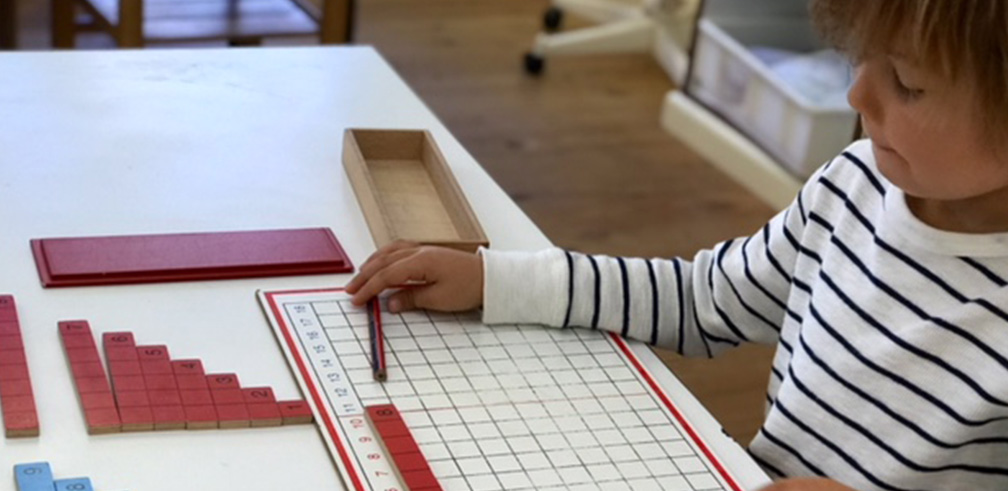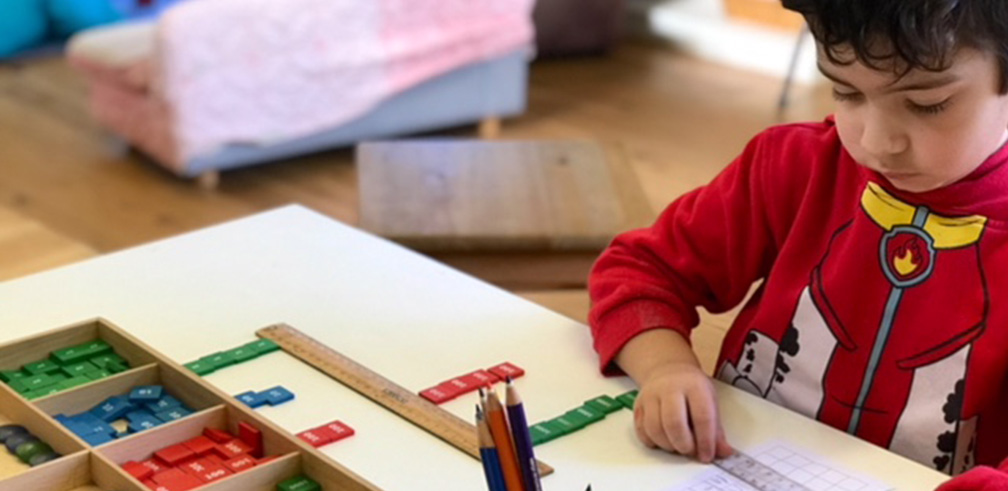The Mathematical Mind

Christine Wright, Director 3-6 Environment
Maria Montessori described the process of the mind rather than the product. From birth the mind helps the child sort and make sense of the world.
The Sensitive periods, Human Tendencies and Absorbent mind gather the information to the brain of the child. They help the child see patterns and relationships in life. It broadens the child’s perspective of the world. It causes the child to be driven and to go out into the world. The child is able to see patterns of nature, patterns of human relationships which lead to understanding and later to forming abstractions.
Maria Montessori offered ways to assist the child. Through observations, she agreed that this was a natural human tendency. The child has the ability to absorb and apply the capacity of mathematics. The Montessori materials could be used as an indirect preparation to enable the child to move from the sub conscious to the conscious.
Characteristics of the Mathematical Mind
Drive towards accurate observations
Order – The ability to create order from chaos
Ability to perceive patterns of relationships
(leading to abstraction and imagination)
All these characteristics are assisted in the 3-6 environment. Areas of the room are organised on shelves from left to right and top to bottom. This also happens with the materials and how they are set out on the shelves. The presentations given to the child are consistent and ordered in sequence.

The Montessori approach in maths is presented in a different way. Our approach to maths is presented at an earlier age. There is no symbolic representation until there is enough experience with the hands and a concrete base first.
Materials follow a progression. The child is introduced to the concept in a concrete form. The child is given lots of opportunity in repetition of the materials so that it becomes solid and concrete. The child has been introduced to quantity by itself. The child holds the entry key to show they understand the concept.
